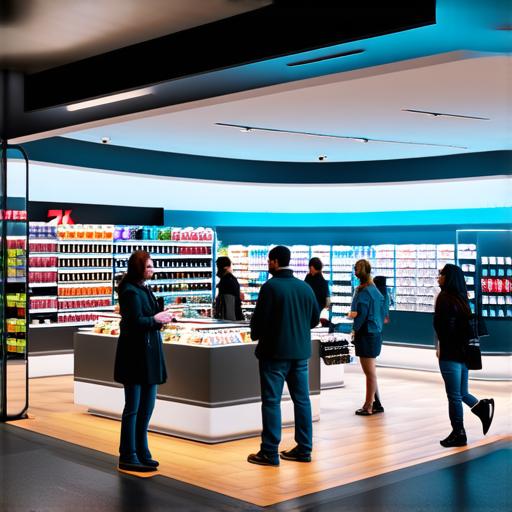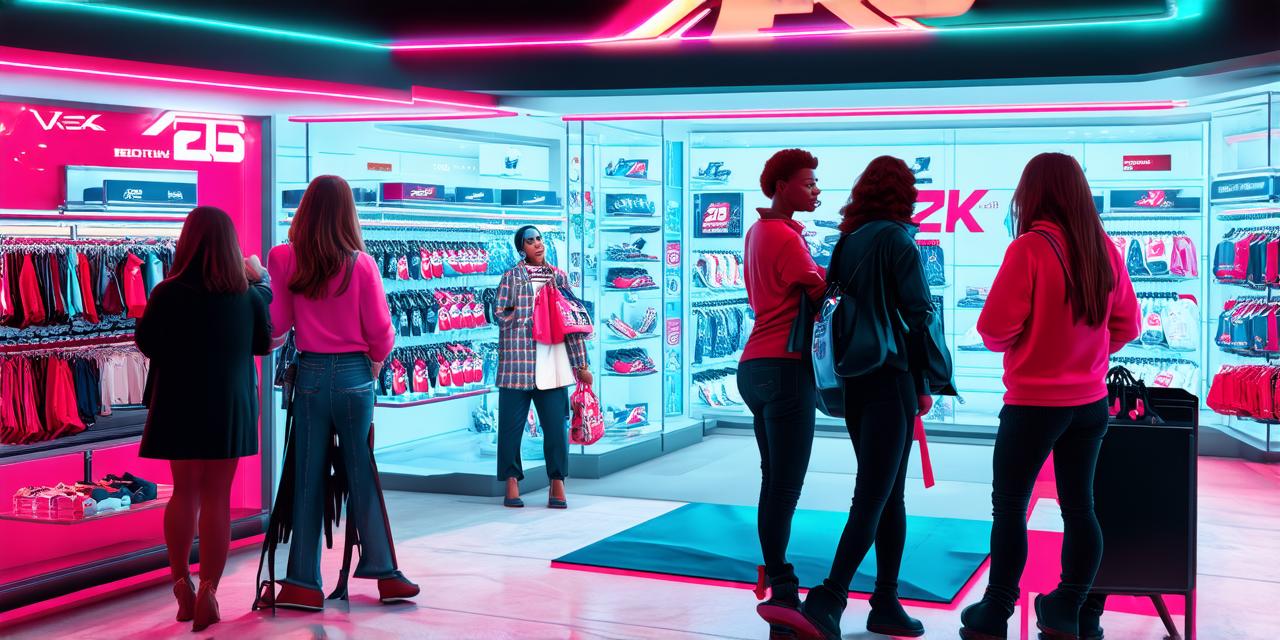
Augmented reality (AR) is a rapidly growing technology that is transforming the way we interact with the world around us. In the retail sector, AR has the potential to revolutionize the shopping experience by providing customers with immersive, interactive, and personalized experiences.
Virtual Try-On: Enhancing Fashion and Beauty Experiences
One of the most popular applications of AR in the retail sector is virtual try-on. This technology allows customers to try on clothes, makeup, and accessories virtually, giving them a better idea of how they will look before making a purchase.
Virtual try-on has proven to be particularly effective in the fashion and beauty industries, where customers are looking for personalized and interactive experiences that allow them to see themselves wearing products.
For example, Sephora, a French cosmetics retailer, launched its first AR virtual makeup application called “Virtual Artist.” The app allows customers to try on makeup virtually and get advice from beauty experts. This technology has helped Sephora increase customer engagement and loyalty by providing a more personalized shopping experience.
Product Visualization: Enhancing Shopping Experience
Another application of AR in retail is product visualization. This technology allows customers to see how products will look in their home or on their body before making a purchase.
Product visualization has proven to be particularly effective in the home improvement and furniture industries, where customers are looking for a more interactive and immersive shopping experience.
For example, Lowe’s, a US home improvement retailer, launched its “AR Vision” application, which allows customers to visualize how furniture and decor products will look in their homes before making a purchase. This technology has helped Lowe’s increase sales and customer engagement by providing a more personalized shopping experience.
Spatial Mapping: Enhancing Store Experience
Spatial mapping is another application of AR in retail that has gained popularity in recent years. This technology allows customers to interact with their environment and products in a more immersive way.
Spatial mapping has proven to be particularly effective in the gaming and retail industries, where customers are looking for a more interactive and engaging shopping experience.
For example, IKEA, a Swedish furniture retailer, launched its “Place” application, which uses AR technology to allow customers to place furniture in their homes before making a purchase. This technology has helped IKEA increase customer engagement and loyalty by providing a more personalized shopping experience.
Benefits of AR in Retail
AR in retail provides several benefits, including enhanced customer experience, increased engagement, and improved sales. By providing customers with personalized, interactive, and immersive experiences, AR technologies help increase customer loyalty and drive repeat business.
Additionally, AR technologies can help reduce the risk of returns and improve inventory management by providing real-time data on product performance and customer preferences.
AR also provides retailers with a unique opportunity to differentiate themselves from their competitors. By offering innovative and interactive shopping experiences, retailers can attract new customers and retain existing ones. Furthermore, AR technologies can help retailers gather valuable insights into customer behavior and preferences, which can be used to improve product offerings and marketing strategies.
Challenges of AR in Retail
Despite the many benefits of AR in retail, there are also several challenges that must be addressed. One of the biggest challenges is the cost of implementation, as AR technologies require specialized hardware and software to work effectively.
Additionally, integrating AR technology into existing systems can be complex and time-consuming, requiring significant resources and expertise. Finally, there are concerns around data privacy and security, as AR technologies collect and store large amounts of customer data that must be properly secured.
Real-Life Examples of Successful AR Implementations in Retail
Despite the challenges, many retailers are successfully implementing AR technologies to enhance their shopping experiences and drive sales. Here are some real-life examples of successful AR implementations in retail:
- Lowe’s, a US home improvement retailer, launched its “AR Vision” application, which allows customers to visualize how furniture and decor products will look in their homes before making a purchase.
- Coca-Cola, a US beverage company, launched its “AR Freestyle” application, which allows customers to create their own personalized Coke bottles using AR technology.
- Nike, a US athletic apparel and footwear company, launched its “AR Run Club” application, which allows runners to track their progress using AR technology.
FAQs
What is augmented reality in retail?
Augmented reality (AR) is a technology that enhances the real world by overlaying digital information on top of it. In the retail sector, AR technologies are used to provide customers with personalized, interactive, and immersive experiences.
How does AR in retail benefit customers?
AR in retail provides several benefits, including enhanced customer experience, increased engagement, and improved sales. By providing customers with personalized, interactive, and immersive experiences, AR technologies help increase customer loyalty and drive repeat business. Additionally, AR technologies can help reduce the risk of returns and improve inventory management by providing real-time data on product performance and customer preferences.
What are some challenges of implementing AR in retail?
Despite the many benefits of AR in retail, there are also several challenges that must be addressed. One of the biggest challenges is the cost of implementation, as AR technologies require specialized hardware and software to work effectively. Additionally, integrating AR technology into existing systems can be complex and time-consuming, requiring significant resources and expertise. Finally, there are concerns around data privacy and security, as AR technologies collect and store large amounts of customer data that must be properly secured.
What are some real-life examples of successful AR implementations in retail?
Despite the challenges, many retailers are successfully implementing AR technologies to enhance their shopping experiences and drive sales. Here are some real-life examples of successful AR implementations in retail:
- Lowe’s, a US home improvement retailer, launched its “AR Vision” application, which allows customers to visualize how furniture and decor products will look in their homes before making a purchase.
- Coca-Cola, a US beverage company, launched its “AR Freestyle” application, which allows customers to create their own personalized Coke bottles using AR technology.
- Nike, a US athletic apparel and footwear company, launched its “AR Run Club” application, which allows runners to track their progress using AR technology.
